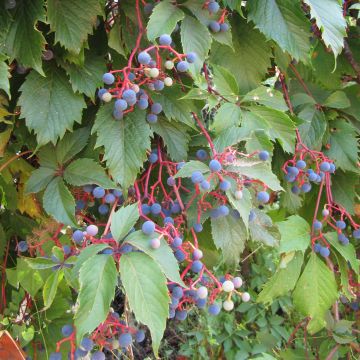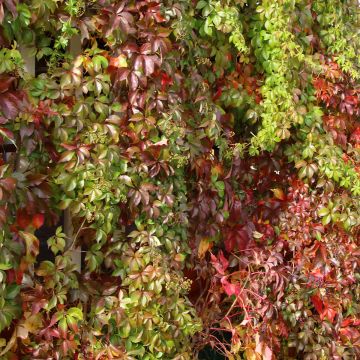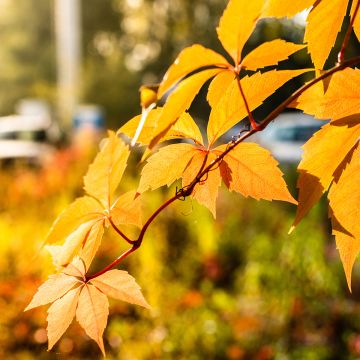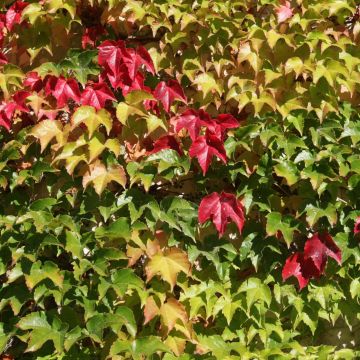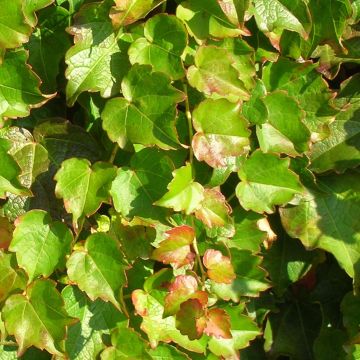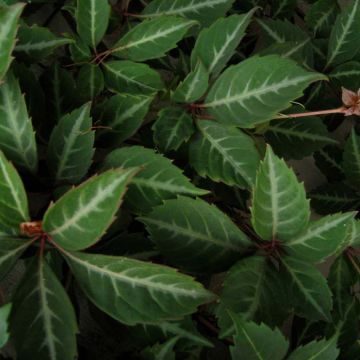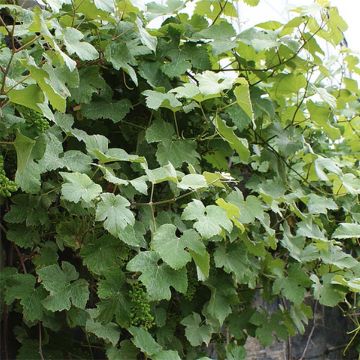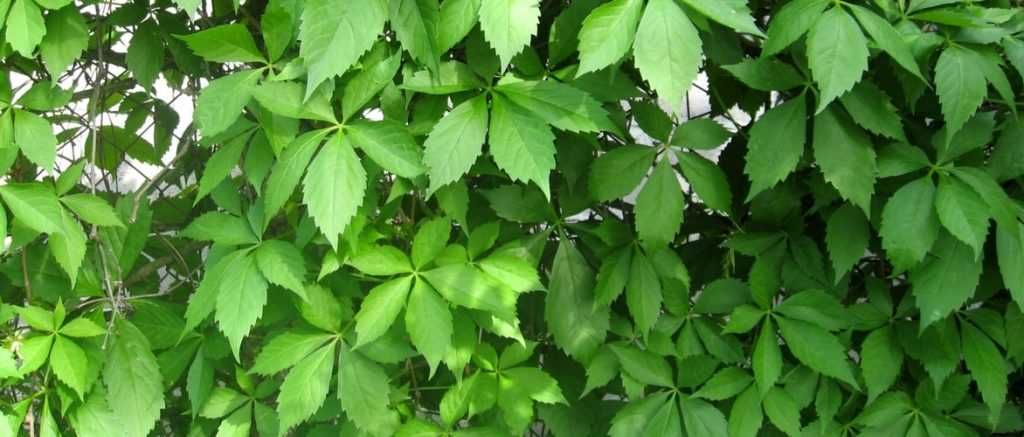
The different Virginia creepers or ornamental vines
How to choose and grow them?
Contents
Ornamental vines are climbing plants grown for their superb decorative foliage. We distinguish between Virginia creepers (Parthenocissus and Ampelopsis) and true vines (from the Vitis genus, like grapevines!). They all belong to the Vitaceae family. Their foliage is deciduous and more or less divided depending on the variety. They take on beautiful fiery colours in autumn. Easy to grow, they require no maintenance and won’t damage the walls they grow against! Let them climb up your house walls or into a tree.
Growing Virginia Creeper
Ornamental vines are ideally planted in spring or autumn, when the soil is still warm and sufficiently moist to encourage good root establishment.
They thrive in well-drained soils rich in organic matter, as excess water could hinder their growth. After planting, regular watering is recommended for the first few weeks, then only during prolonged dry spells.
A light pruning in late winter helps control their growth and promotes dense, harmonious foliage. Finally, an annual application of compost or organic fertiliser at the base of the plant contributes to vigorous growth and vibrant autumn colours.
Virginia creepers (Parthenocissus)
Virginia creepers originate from North America and Asia. They are robust and vigorous plants, which cling on their own thanks to tendrils with suction cups at their tips. They feature large green leaves that turn orange to purple in autumn. Plant them in partial shade, in cool, rich but well-drained soil.
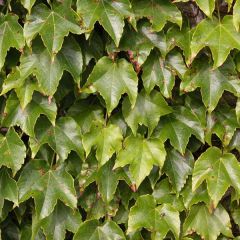
Parthenocissus tricuspidata Veitchii - Boston Ivy
- Flowering time August, September
- Height at maturity 10 m
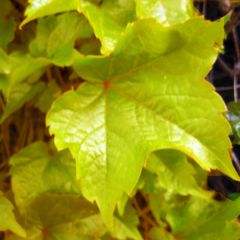
Parthenocissus tricuspidata Fenway Park - Boston Ivy
- Flowering time August, September
- Height at maturity 10 m
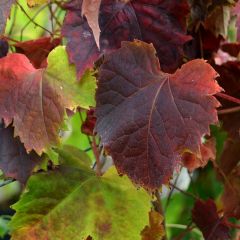
Parthenocissus tricuspidata Atropurpurea- Boston Ivy
- Flowering time August, September
- Height at maturity 15 m
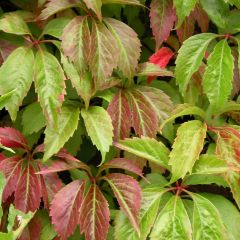
Parthenocissus quinquefolia Engelmannii - Virginia Creeper
- Flowering time August, September
- Height at maturity 12 m

Parthenocissus quinquefolia Star Shower- Virginia Creeper
- Flowering time August, September
- Height at maturity 10 m

Parthenocissus henryana
- Flowering time August, September
- Height at maturity 7 m
Discover other Parthenocissus - Virginia Creeper
Ampelopsis
These are Virginia creepers very similar to Parthenocissus. They are notable for their colourful, inedible berries.
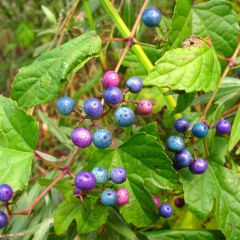
Ampelopsis glandulosa var. maximowiczii
- Flowering time July to September
- Height at maturity 4 m
The true ornamental vines (Vitis)
These are real vines, of the Vitis genus, like those cultivated for grapes. You can train them to climb a trellis or pergola; they will cling using their tendrils. Plant them in well-draining soil, in a sunny or lightly shaded position.
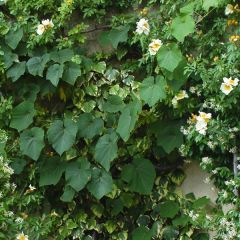
Vitis coignetiae - Ornamental Vine
- Flowering time July
- Height at maturity 12 m
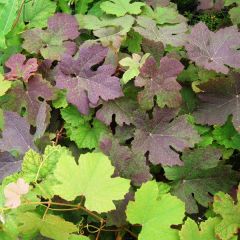
Vitis vinifera Purpurea - Grape Vine
- Flowering time July
- Height at maturity 6 m
How to use Virginia creepers effectively in your garden?
Ornamental vines are perfect for dressing up the garden with elegance and dynamism. Their evolving foliage throughout the seasons adds a natural and decorative touch, whether in a large space or a small green corner.
Which structures can they climb on?
- Walls and façades: Virginia creepers (Parthenocissus) cling on their own thanks to their suckers and quickly cover a wall. They are ideal for giving buildings a charming green cover without damaging them.
- Pergolas and arbours: True vines (Vitis) are perfect for creating pleasant shade in summer while letting light through in winter. They can also provide decorative clusters.
- Trellises and fences: Perfect for structuring a garden and hiding unsightly wire fencing or palisades.
- Trees and shrubs: Some varieties can climb trees without suffocating them, creating a natural and wild effect with stunning results.
Pairing with other climbing plants or shrubs
Ornamental vines can be combined with other plants to create beautiful contrasts:
- With climbing roses: for colourful and romantic blooms.
- With clematis: their delicate flowers complement the dense foliage of vines.
- With evergreen shrubs (such as holly or laurel): to maintain greenery in winter.
- With ivy: for an evergreen effect and an interesting contrast between deciduous and evergreen foliage.
Ideas for small spaces: varieties suited to balconies and terraces
If space is limited, some more compact varieties can be grown in pots on a balcony or terrace:
- Parthenocissus tricuspidata ‘Minutifolia’: a slower-growing Virginia creeper, ideal in a container with a trellis.
- Ampelopsis brevipedunculata ‘Elegans’: a beautiful variegated vine with decorative berries, which grows well in pots.
- Vitis vinifera ‘Purpurea’: an ornamental vine with purple foliage that can be trained on a small support.
Did you know?: Ornamental vines, particularly Ampelopsis and some Parthenocissus, produce decorative berries that feed birds in autumn and winter, thus contributing to local biodiversity. Their dense foliage also provides shelter for many beneficial insects, such as ladybirds, and can even serve as a refuge for lizards and small mammals.
- Subscribe!
- Contents


































